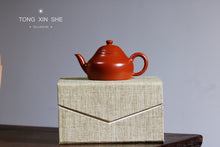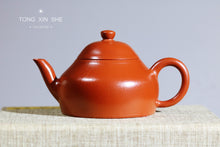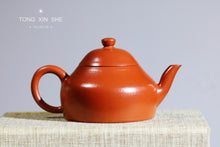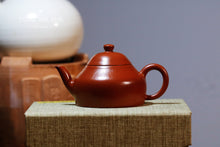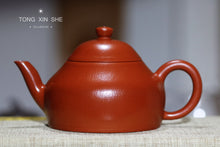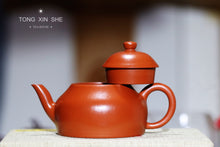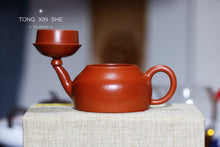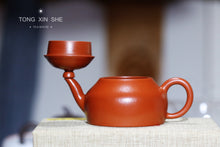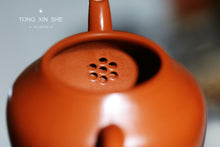
The "Mansheng Banyue Zisha Teapot" brought to you today is one of the classics of Mansheng's 18 styles. It is a pot shape created by Chen Mansheng based on the bright moon.
This pot is made by Mr. Xu Linfeng imitating Gumansheng's half-moon pot, but it is different from the traditional half-moon pot. Mr. Xu Lin Feng made slight changes to the details, not only retaining the original charm, but also injecting a new "soul".
Mr. Xu Linfeng, a national-level arts and crafts artist, was born in 1970. For more than 30 years, he has been learning and innovating continuously, and is deeply loved by collectors. A handful of purple sand works, from clay selection, production, to molding, are meticulous. Due to the fact that Zhuni is easy to deform, crack and many other factors during production, the technical requirements for pot makers are also particularly high.
This pot is elegant in shape, practical and ornamental. The body of the pot is in an inverted hemispherical shape. The top of the inlay lid is equipped with a bridge button, matching the top and bottom. The handle is also ring-shaped. The whole pot is simple and steady. Simple and majestic, the body of the pot is full and round, the water flowing out of the curved pot is powerful, and the bottom of the pot is broad and stable. As we all know, good mud makes it easier to make the pot have a warm and jade-like texture. As a good product for pressing the bottom of the box, this teapot uses Zhaozhuang Zhuni as the mud material. It is also known as two kinds of Zhuni, which are rare players, together with small coal kiln mud. The block shape is different. This Zhaozhuang Zhuni is produced under the Yellowstone layer. It is a hard ore in a large block and is very rare. Here we will focus on the shrinkage rate. The shrinkage rate of ordinary Zhuni is 10%, while that of Zhaozhuang Zhuni reaches about 25% or even 30%, which can be said to have reached the limit of Zhuni. When you look at the body of the pot, you will find obvious large vertical stripes. This is the legendary "no wrinkle, no Zhu".
At the same time, the body of the pot has a strong sandy feel, which is very different from ordinary cinnabar, which is very oily. If you look closely, there are many small black spots on the body of the pot.
This kind of pot is classic in shape, has humanistic value, and can be used on the daily tea table. It is worth collecting.










